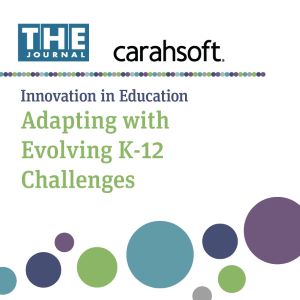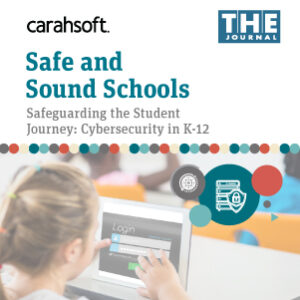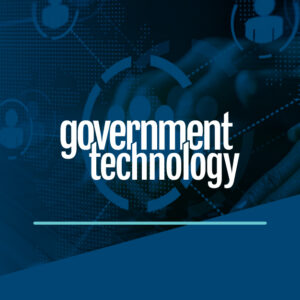The last few years brought a level of technological complexity to K–12 schools that teachers, students, and administrators are still grappling with. Succeeding in those efforts requires embracing the fluid nature of an increasingly complex world. Educational leaders learned a number of lessons during the pandemic, and they have already begun to apply them to build a better future for their students and their school districts. These lessons are familiar to IT leaders in government and industry, and they include the need for stronger cybersecurity, robust data analytics for better decision-making, and a more holistic approach to IT management. As K–12 leaders absorb the lessons of the past few years, they are transforming their approach to technology and building educational systems that can thrive at a time when change is the only constant. Read the latest insights from industry thought leaders in K–12 education.
Gleaning Powerful Insights From Financial Data
“Today’s technology advances are directly supporting teachers and students, but school performance also benefits from improvements to back-office operations. Better budget management in particular can have a meaningful impact on a wide range of goals. The latest technologies enable schools to automate routine activities, such as processing and paying invoices. An automated system can more quickly, efficiently, and accurately capture information than humans can, but even more importantly, automation opens up the ability to adopt machine learning, which can identify important patterns and trends in spending. By freeing the finance team from mundane tasks and providing richer insights into how budgets are being used, schools can plan more effectively and ensure their money is being spent wisely.”
Read more insights from Jim McClurkin, Senior Director of Public Sector at SAP Concur.
Collaborating Across Districts for Cyber Resiliency
 “Taking it a step further, when schools share information with one another about the problems they are seeing and the attacks they are facing, they can crowdsource solutions and thereby boost cyber resiliency across districts and across the K–12 sector as a whole. That approach also offers a way for schools to enhance security even when funding for IT systems and staff is less than robust. Rather than leaving under-resourced districts to tackle cybersecurity in isolation, the K12 Security Information Exchange’s report concludes that ‘school districts should put a premium on sharing threat intelligence, sharing best practices, developing model policies, pursuing mutually beneficial risk mitigation solutions that can be deployed at scale, and educating state and federal policymakers about K–12 cybersecurity challenges and potential solutions.’ Pooling resources among districts can have a powerful impact, and schools can also benefit from tapping into federal security standards, many of which offer well defined processes for responding to specific scenarios and situations.”
“Taking it a step further, when schools share information with one another about the problems they are seeing and the attacks they are facing, they can crowdsource solutions and thereby boost cyber resiliency across districts and across the K–12 sector as a whole. That approach also offers a way for schools to enhance security even when funding for IT systems and staff is less than robust. Rather than leaving under-resourced districts to tackle cybersecurity in isolation, the K12 Security Information Exchange’s report concludes that ‘school districts should put a premium on sharing threat intelligence, sharing best practices, developing model policies, pursuing mutually beneficial risk mitigation solutions that can be deployed at scale, and educating state and federal policymakers about K–12 cybersecurity challenges and potential solutions.’ Pooling resources among districts can have a powerful impact, and schools can also benefit from tapping into federal security standards, many of which offer well defined processes for responding to specific scenarios and situations.”
Read more insights from Brandon Shopp, Group Vice President for Product Management at SolarWinds.
Innovative Tools for Protecting Students Online
“Cyberbullying in particular affects a wide range of students. The StopBullying.gov website managed by the U.S. Department of Health and Human Services states that ‘cyberbullying includes sending, posting, or sharing negative, harmful, false, or mean content about someone else. It can include sharing personal or private information about someone else causing embarrassment or humiliation.’ According to the Centers for Disease Control and Prevention, middle school students report the highest levels of cyberbullying, followed by high school students and then primary school students. In a 2020 study conducted by Justin Patchin and Sameer Hinduja of the Cyberbullying Research Center, 49.8% of tweens (9 to 12 years old) said they experienced bullying at school, and 14.5% said they experienced bullying online. For nearly 70% of the latter group, cyberbullying made them feel bad about themselves. It also had a negative effect on their friendships, physical health, and schoolwork.”
Read more insights from Colin McLean, Product Specialist at Saasyan.
Download the full Innovation in Education report for more insights from these K-12 thought leaders and additional industry research from THE Journal.

 “Traditionally, for good reasons, the conversation in K-12 has been focused on education. The priority for spending has been steered toward academics — getting more support and training for teachers and trying to control the classroom size, for example. Technology, and especially cybersecurity, was a scheduled expense, up there with predictable plumbing problems and textbook replacement, but contained within the IT organization. However, IT — and especially cybersecurity — has now become a strategic element for education. Parents, superintendents, board members and executives within administration have realized that keeping data and systems safe can have a district-wide impact. Experience a data breach or a ransomware event and you’ll suffer damages that strike your budget as well as your reputation: Families will leave your schools to go to the district next door that didn’t have a break-in. That means it has become something that should be part of all decision-making.”
“Traditionally, for good reasons, the conversation in K-12 has been focused on education. The priority for spending has been steered toward academics — getting more support and training for teachers and trying to control the classroom size, for example. Technology, and especially cybersecurity, was a scheduled expense, up there with predictable plumbing problems and textbook replacement, but contained within the IT organization. However, IT — and especially cybersecurity — has now become a strategic element for education. Parents, superintendents, board members and executives within administration have realized that keeping data and systems safe can have a district-wide impact. Experience a data breach or a ransomware event and you’ll suffer damages that strike your budget as well as your reputation: Families will leave your schools to go to the district next door that didn’t have a break-in. That means it has become something that should be part of all decision-making.” Giving Remote Workers Access to Resources They Need
Giving Remote Workers Access to Resources They Need